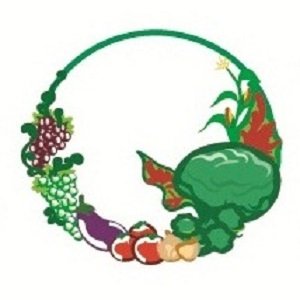What’s in Your Spring Box: Week #4
Welcome to Featherstone Farm and to the month of June. This is our last spring CSA box. I'm going to introduce you to crops and talk today about the transition from high tunnel to field grown crops in our spring share at Featherstone Farm.
First I'd like to thank all of you that have been spring members this year and past years. Growing our program this time of year, providing local food in the months of May, April, March… this is our long-term goal at Featherstone Farm and we're delighted to have you a part of it. Thank you for helping us out towards our goal.
For this week, first week in June, we are transferring and getting into field grown and field harvested crops. It's a pretty exciting box. We do have a mix of things, however, beginning with storage beets from last year. These have been in our cooler since October and they have that deep, rich, hearty quality that you'd expect from a winter beet (great for stewing) very, very last of the year. Saying goodbye to 2023 crop in June of 2024, thanks to storage.
We have more of these wonderful onions. I've been enjoying eating these things the last few days. These tops are not to be forgotten about. Really fresh spring quality for adding a little bit of pop or spice to your spring salads. Do not forget to eat the whole darn thing. They have a really wonderful, mild flavor when grown this time of year. Again, a new crop at Featherstone Farm, very excited about it.
We have more of these fresh Hukarai turnips and baby beets. Same thing as last week where these greens are taller now. They're growing very quickly in the high spring sun, but they are so tender, worth eating. Do not forget about the greens. And, again, unlike these winter beets, these have very thin skins. They do not need to be removed or peeled or whatever, just thin sliced. And so tender in the spring, high tunnel, these can be eaten raw. You don't even need to cook these beets. Great in a salad, same thing with the turnips.
We have a really wonderful treat here for this first week here, out of the high tunnel are kohlrabis. This is one of my personal favorite crops this time of year. Again, so fresh and crunchy, just a thin skinning and then slicing and eating fresh. Some people like a little bit of salt on there. I do want to remind you also the tops, like kales, are good eating and can easily be used in salads or steamed. Think of them as sort of a lightweight collards. So the tops of the kohlrabis are good. Radishes and asparagus are well known to most people. We did have a shortage of radishes this week, I'm afraid to say, folks. We do our very best to figure out just how many things we can allocate and put in boxes. This week we fell a little short on radishes. My apologies, but we're doing our best to fill boxes with the full range of things.
Now we're getting into the exciting stuff. I want to show you field grown greens.
These are high tunnel Red Russian kale, just like you had last week. Remember, I talked about this very tender, like the kohlrabi greens, like the beet greens need to be cooked very lightly.
But here, however, we have field grown chard, which is so gorgeous. These have been outdoors, loving the spring, early summer weather. These are much hardier, so tasty, nutrient dense, high quality chard for this week's box. This time of year, you're mainly eating vegetation, right? Leafy greens of things, not just salads, but for all types of stir fries, sautés, braising and so forth.
Green leaf lettuce is field grown here. This is coming right out of the field. We're trying to do our best to clean up. I talked about cleaning them last week.
We have cilantro, which is the very last of the high tunnel grown, along with the dill. You can see these guys are now getting pretty, pretty grown up. They're not overgrown, but they've been in the tunnel in that high sun for a long time. They're getting as big as we like to see them.
Here is June green kale. If you're ever going to make a kale salad, folks, this is the stuff to make. It is really crunchy and crazy flavorful. Cool soil, kale loves cool soil. So it's going to have really good flavor this time of year. And most importantly, it's growing quickly. So it is really going to be good for salads. You're going to be crunching it up. This doesn't require as much massaging, as much crunching as a fall kale might.
And then finally, I just want to show off field grown romaine lettuce. This time of year, folks, these guys are so hearty and healthy. That is a heavy, beautiful romaine to cap off our spring share in 2024.
Thank you very much for being members.
See you in the summer.
Jack~ and crew
From Jack’s voice~ transcribed from the Instagram reel















